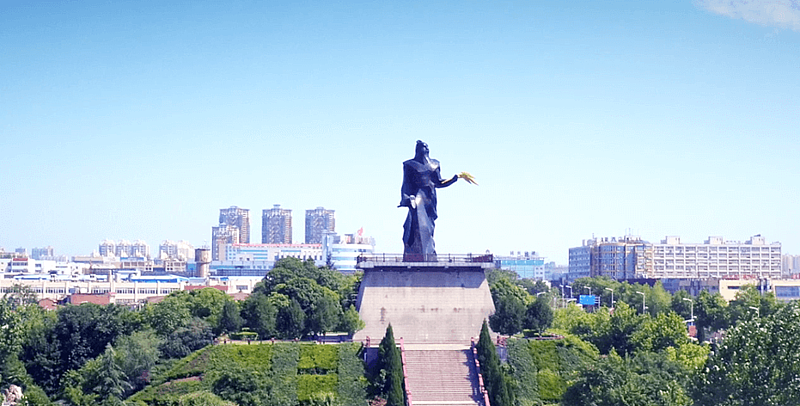Geographic location
Located in the west-central part of Guanzhong Plain of Shaanxi Province, Yangling Agricultural Hi-tech Industry Demonstration Zone reaches Qishui River as the boundary with Wugong County to the east, echoes Zhouzhi County across the Weihe River to the south, borders on Fufeng County to the west and adjoins Fufeng County by the Weishui River to the north. It is situated between 108º~108º07’at east longitude and 34º12’~34º20’at northern latitude, about 16km from east to west, and 7km from south the north. The administrative area is 135 km2, and it is 82 km away from Xi’an City in the east and 89km away from Baoji City in the west. The major arteries such as the important part of Eurasia Land Bridge - Lanzhou-Lianyungang Railway, Xi’an-Baoji Expressway, middle line of Xi’an-Baoji Expressway passes through the whole territory from the east to the west, together with many north-south highways. It is 70km away from Xianyang Xi’an International Airport, and is connected with expressways, enjoying convenient transportation and an advantageous geographic location.
Natural environment
Yangling Agricultural Hi-tech Industry Demonstration Zone is located on the northern bank of the Weihe River. The terrain is higher in the north and lower in the south, falling off in a ladder pattern from north to south and forming three tableland slops by orders, with an altitude of 435~563m. Yangling Agricultural Hi-tech Industry Demonstration Zone is surrounded by rivers on three sides - Weihe River in the south, Qishui River in the east and Weishui River in the north. Weihe is the largest river therein. In addition, the main canals of Guanzhong Irrigation Area (Gaogan Canal and Weihui Canal) run from east to west. It has rich water resources and superior water conservancy conditions. Here tableland, sloping fields and bottomland intersect with each other, and the soil is fertile, suitable for the growth of a variety of crops. The annual precipitation is 635.1~663.9, and the average annual temperature is 12.9℃, belonging to continental monsoon semi-humid climate with four distinctive seasons. Most of the precipitation is in July and September. In winter, west wind and northwest wind prevail, and east and southeast wind prevail in the other seasons.

